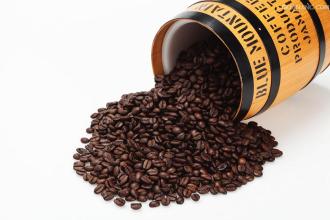How do coffee beans grow? why do they bake? where do coffee beans grow?
How do coffee beans grow? why do they bake? where do coffee beans grow?
Coffee trees are very similar to laurel and usually grow between the Tropic of Cancer and the Tropic of Cancer.
A coffee tree usually grows for about three to four years before it begins to bear fruit. The fruit is a red berry, which is dried and the pulp is removed to separate the coffee beans.
There are shadows of coffee beans all over the world, and they can grow as usual as long as the climate is right. These places suitable for the cultivation of coffee beans are located between the Tropic of Cancer and the Tropic of Cancer, collectively referred to as the "coffee growth zone". Coffee beans grow into different species depending on farming methods, regional climate and various factors.
Before introducing which country produces that kind of coffee beans, we might as well first understand the various congenital factors that can affect the texture of a cup of coffee. The so-called taste of coffee is the combination and harmony of the aroma that coffee can give to the nose and the taste it brings to the tongue.
The first impression of a cup of coffee is its "aroma". This fragrant and depressing smell can lift one's spirits and thoroughly appreciate a cup of high-quality coffee.
The second impression is the "taste" of coffee. The sour taste of coffee is the main consideration of its taste. Although the acidity of the whole nation is not directly related to the quality of coffee, as the most connotative part of coffee beans, sour taste brings varying degrees of taste to coffee.
Finally, there is the "taste" of coffee. Although it is not a major factor in the quality of coffee, it can complement each other with the aroma and taste of coffee, giving people a clear sense of the more tangible texture of coffee beans.

Important Notice :
前街咖啡 FrontStreet Coffee has moved to new addredd:
FrontStreet Coffee Address: 315,Donghua East Road,GuangZhou
Tel:020 38364473
- Prev

Description of the Best time and Flavor of ground Coffee beans the characteristics of regional treatment of taste varieties
The best time flavor of ground coffee beans describes the characteristics of the regional treatment of the varieties. ① friction heat inhibition to a minimum. (the aroma will be dispersed due to fever) whether the size of ② particles is uniform or not. (if the particles are uneven, the concentration will be uneven.) taking this as a consideration, if you are a household mill, you should rotate it gently and pay attention to keeping it from producing friction as much as possible.
- Next

What kind of hand coffee grinder is better-how to investigate the fineness of the grinder
Which kind of hand coffee grinder is good-how to investigate the coffee grinder how to use the fineness grinder before brewing, there are two kinds of household grinders: manual and electric. The manual type is used if the number is small, while the electric type is more convenient for the large number of people. With the bubbling apparatus to determine the grinding method (particle size) the manual grinder should be careful not to produce friction heat only.
Related
- Guji coffee producing area of Guji, Ethiopia: Humbela, Shakiso, Wulaga
- What is the most expensive variety of Qiloso in BOP multi-variety group?
- How to store the coffee beans bought home?
- Why are Yemeni coffee beans so rare now?
- Ethiopian Sidamo all Red Fruit Sun Sun Santa Vini Coffee beans
- SOE is mostly sour? What does it mean? Is it a single bean? what's the difference between it and Italian blending?
- Is Italian coffee beans suitable for making hand-brewed coffee?
- How to choose coffee beans when making cold coffee? What kind of coffee beans are suitable for making cold coffee?
- Just entered the pit to make coffee, what kind of coffee beans should be chosen?
- Can only Japan buy real Blue Mountain Coffee? What are authentic Jamaican Blue Mountain coffee beans?

